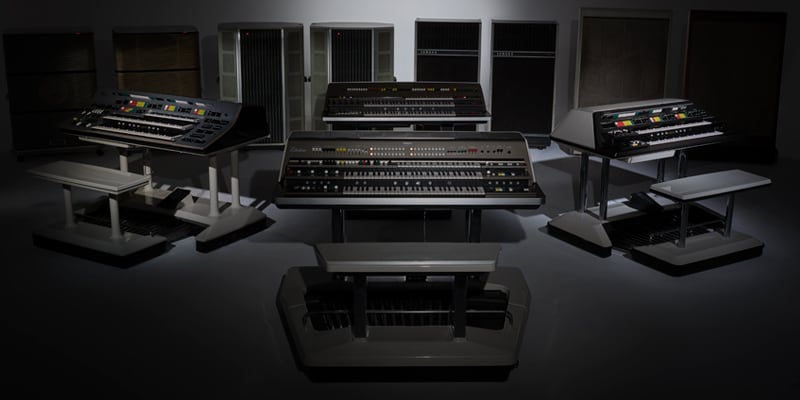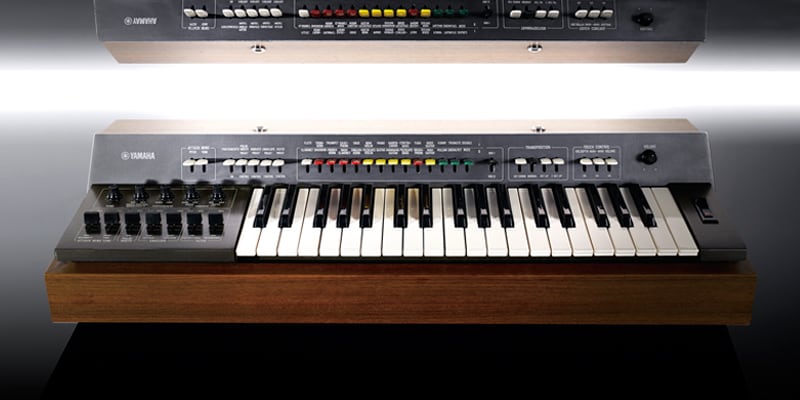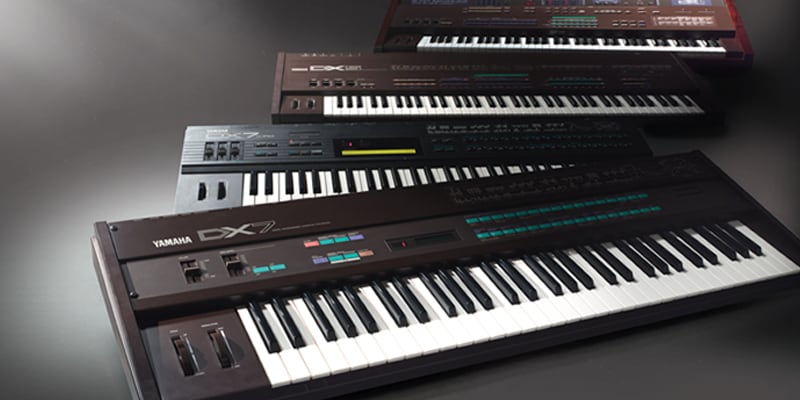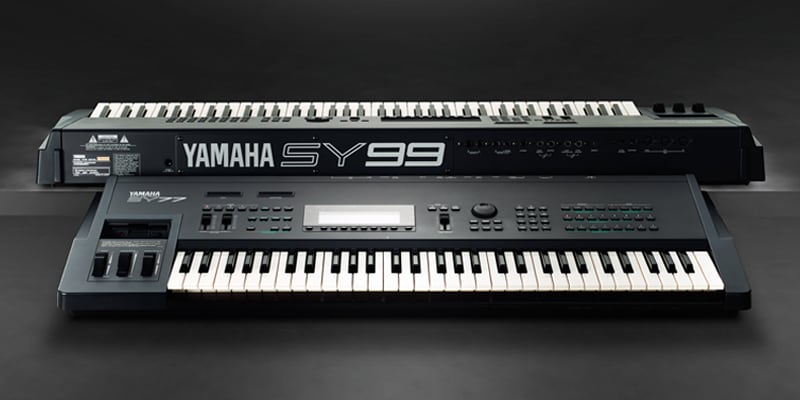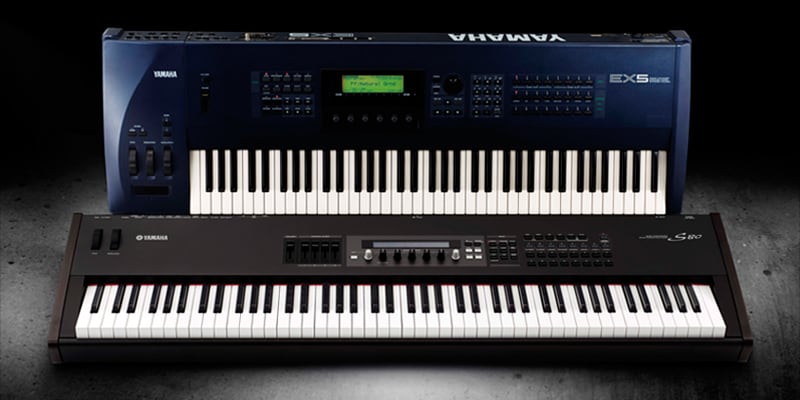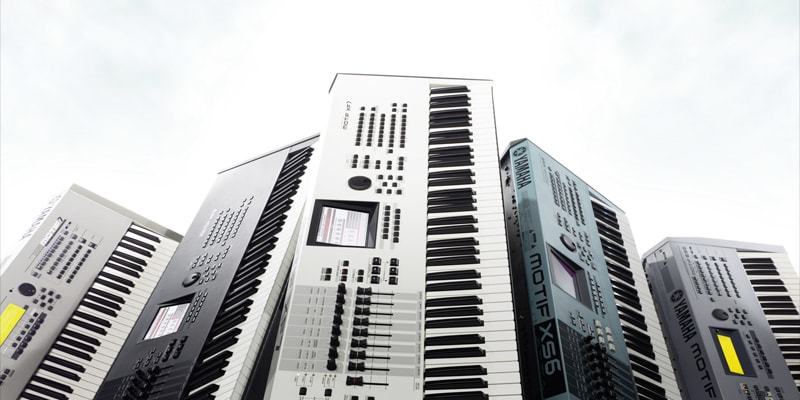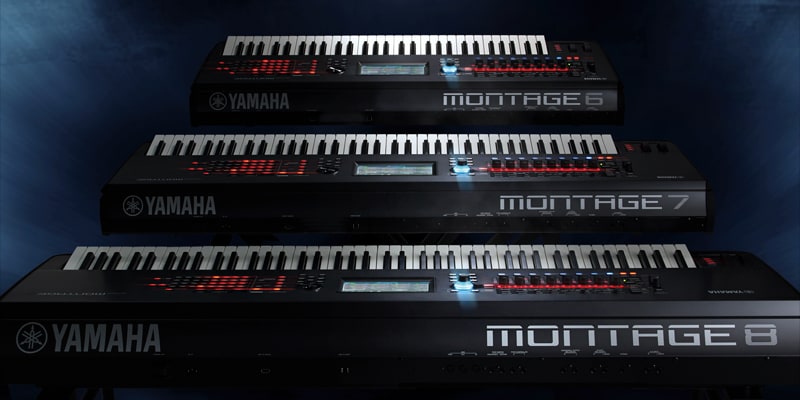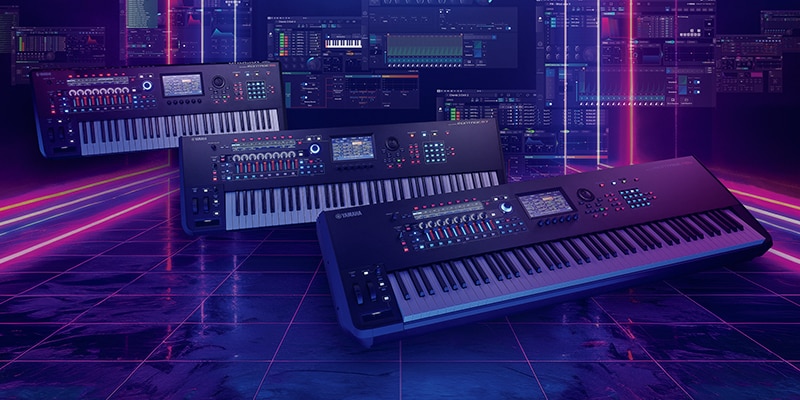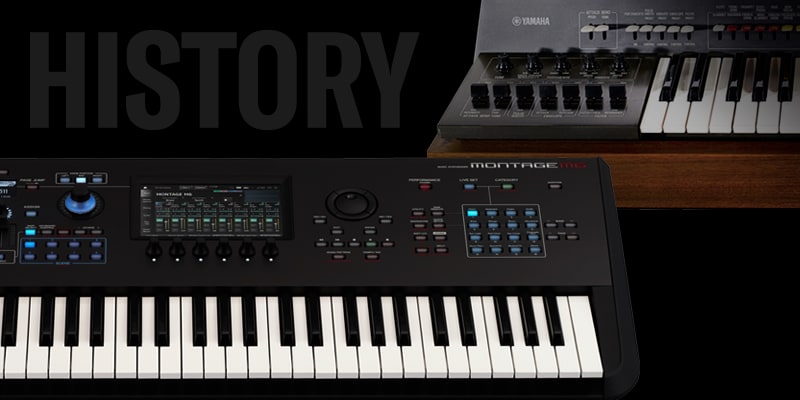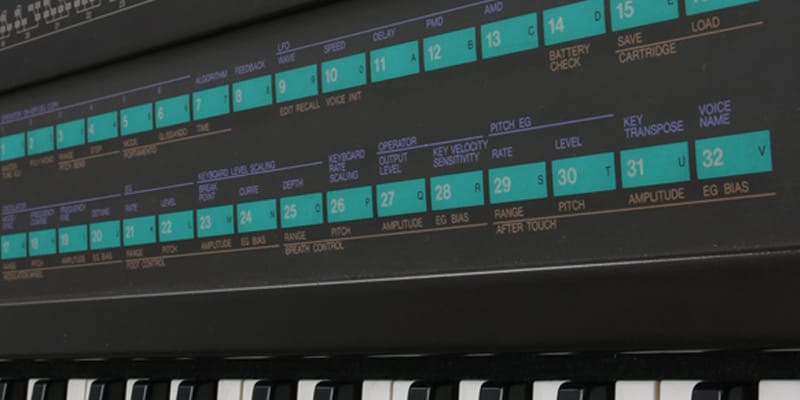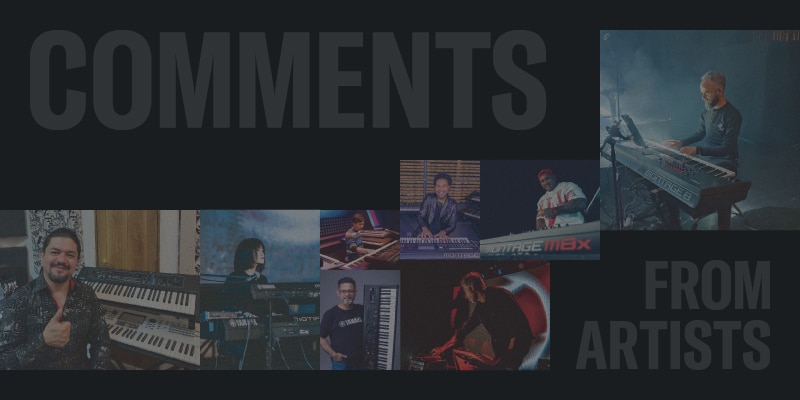Chapter 6: A New Chapter for Yamaha Synthesizers
The Reface Series, Born of an After-work Project

As the technologies at the heart of synthesizers and other products reach maturity, Yamaha continues to develop exciting new products by taking the pulse of the market and anticipating the ever-evolving needs of musicians. For example, in response to the meticulous market research undertaken for the MOTIF series, and seeing music creators embrace the workstation synthesizer, we developed products that would satisfy the demand for greater affinity with Cubase and other music production software commonly known as the Digital Audio Workstations (DAW). But in today’s information-driven society—overflowing with bigger and faster data—simply equating success with rapid reaction to market sentiment no longer cuts it. It’s against this backdrop that three young Yamaha engineers embarked upon an audacious quest.
These three engineers often talked passionately about their dream musical instruments – a new kind of synthesizer – and started getting together after work to make them a reality. As kindred spirits, each having enjoyed tweaking the sounds of these instruments for years, they spoke excitedly of synth controllers that you could simply grab and play with, and they got to work on a prototype.


Inspiration initially came from the highly interactive CS01, which Yamaha had released back in 1982. They wanted their new synths to be more than a tool for playing songs. They wanted these instruments to elevate the pure joy of playing with sound to new heights. After all, wasn’t this what the synthesizer was originally supposed to do?
The next step was to convince colleagues at Yamaha to adopt their pet concept as an official development project. To this end, they created a mountain of presentation material and enthusiastically lobbied for their idea within the company, ultimately getting the nod to bring their extracurricular venture in-house as a sub-project to be worked on during a portion of their regular workday.
The team started by evaluating the feasibility of the ES—a synthesizer that would ultimately evolve into the CS model in the reface series. Taking its name from the abbreviation of “Enjoy Synthesis,” this concept instrument was equipped with an analog-synthesis tone generator and simple controllers to better understand how users could have fun with sound.

Starting with a mini keyboard and form factor similar to the CS01, the three engineers brainstormed new design features and functions, and they arrived at the concept of a “small but serious” instrument that made it easy to play with sound. They built the ES as an embodiment of this concept, yet did not limit their early efforts to the analog approach alone. They also experimented with other engines—namely, the DX frequency-modulation tone generator, the CP tone generator for electric pianos, and the YC organ tone generator.
The next phase was to build a prototype that could generate compelling sounds. To do so, the team added software, a keyboard, and other controller elements such as sliders to the AN analog-modelling tone generator already developed by Yamaha. Even at this relatively early stage, the team’s decision to delve into the emotive aspects of the user interface (UI) was a pivotal factor in successfully turning the reface into a small-but-mighty musical instrument.
Long before it matured into the CS, this prototype started to develop an identity that was markedly different from the virtual analog synthesizers—that is, digital instruments that simulated the analog experience—on the market at the time. And this divergence of ways began as the engineers optimized how the sliders and parameters interacted with one another.

A typical analog synthesizer creates sound using three main components: the oscillators that produce sawtooth, square, and other sound waves; the filters used to make these waves sound brighter or darker; and the amplifiers that control the volume of the resulting sound. In addition, envelopes can change the behavior of each component over time, while low frequency oscillators modify them in a cyclical fashion. As a result, even the simplest of instruments has a formidable number of sound-sculpting parameters. But the ES was different. Just three sliders—Type, Texture, and Mod—offered almost complete control over the myriads of sounds that the AN tone generator could produce. Thanks to this innovation, playing with sound became even more exciting.
The ES prototype then underwent round after round of internal review, where the input from colleagues was instrumental in refining the tone generator, UI, and overall size. The original team then focused their attention on physical designs that would bring their concept even closer to fruition, enlisting the help of veteran designers who shared their passion for that vision.

Once people saw the original design concept in a physical form and experienced for themselves the joy of playing with its sound, they were sold. The decision was made to develop the synth as a totally new Yamaha product.
In addition to the body of the synth, they proposed new ideas for switches, levers, and sliders that would be fun to play with, as well as other eye-catching elements. All of these were combined into various design mock-ups. And with the physical form of the synth now starting to come into view, a palpable sense of excitement began to build at status meetings. It became clear that building a fully working prototype was a crucial next step, and approval was granted.
There is no truer form of craftsmanship than extracting an idea from one’s imagination and giving it a physical form. In this spirit, the team then came together day after day following their regular duties, working tirelessly until the prototype was built. Inspired by the small-but-serious instrument in their mind’s eye, a combination of creativity, ingenuity, and dedication saw them through. They now had a working prototype.

But even as this corner was turned, the team faced a new set of challenges, such as marketability and manufacturability, that would need to be addressed. In particular, a new type of keyboard—both playable and highly compact—would have to be developed in order to make their musical instrument a reality. In fact, the team knew that they would need the world’s most playable mini keyboard if they were to be successful. With the help of specialist keyboard designers, they got to work.
The Yamaha Pianica—an educational keyboard instrument—served as a valuable start point. Playability was further enhanced using longer individual keys than those of other compact instruments such as the CS01 and DX100. No detail was overlooked in the creation of this new keyboard. Special attention was given to the shape of the keys’ upper surface, as it played a crucial role in ensuring playing comfort – whether the keys were held down or played glissando. This meticulous effort, led by the three core members who shared a deep passion and understanding of the project, left no doubt that the final keyboard stayed true to the original design concept.
All the main elements of the reface had now come together, yet many hurdles remained before it could be released as a Yamaha product. For starters, working out how to assemble critical components into tight spaces in the case without overhauling the design was a major challenge. And it was not simply a case of using slightly thinner components here and there to save a millimeter or two: the entire internal structure would have to facilitate mass production on the company’s assembly lines. In addition, our synthesizer development team had no built-in speakers that could satisfy the “small but serious” design concept. They had to be designed from scratch.
Part of this involved careful selection of digital-analog converters (or DACs) on which sound quality hinges.

In parallel with these efforts, design of the instrument’s unique sound proceeded in a totally uncompromising fashion. In the ES—precursor to the reface CS—the team focused on the parameters that controlled the oscillators, while in the DX, the FM synthesis algorithms and the UI were both revamped to make the complex FM tone generator easier to understand and operate. Voice-specific parameters, such as drive and tremolo, were fine tuned for the CP, and for the YC, the team meticulously recorded new samples from the exquisite organ of the same name.
Scheduled for release in July 2015, the reface CS, reface DX, reface CP, and reface YC were the fruit of this unyielding effort, dedication, and commitment to the original concept. They provided owners with an opportunity to once again come face-to-face with musical instruments, and this inspired the “reface” name.
Driven by the developers’ passionate desire to re-experience their favorite synths as new products, the dream of three engineers behind the small-but-serious concept is realized each time users share in that same excitement.
Focusing on Advances in Music with the MONTAGE
The flagship of the Yamaha synthesizer lineup since its launch in 2001, the MOTIF was designed to be the ultimate workstation synthesizer. It established a virtually unassailable position in the market, but as the years went by, end users and artists were increasingly keen for Yamaha to offer a new flagship. Yamaha responded, but instead of just releasing a new MOTIF, we decided to reevaluate the intrinsic merits of the hardware synthesizer itself.

This was no easy task. To start, we sought to understand whether this type of instrument could realistically hold its own with the Digital Audio Workstation (DAW), now in its golden era. In this, we considered whether the fundamental point of the hardware synth was the creativity that could be found in physically making and controlling sounds. We asked ourselves what it is to create the sounds worthy of a flagship synth and to control them in a meaningful way.
The developers of the new flagship focused on the role of the synth in contemporary music, the ways in which users produce music today, and how such an instrument should sound. Their efforts led to the conclusion that two new synthesizer features held the key to almost limitless expression.
The first of these is the ability to manipulate sound in a multidimensional fashion. For example, the tones produced by conventional synthesizers are shaped by changing filter parameters to make them brighter or darker. Character can also be added in a number of other ways, such as modulating the volume and adding special audio effects. As a result, these instruments feature a wide range of controllable parameters. Yet these parameters must be adjusted one by one to sculpt the sound. The ability to change several of them simultaneously is the basic concept behind multidimensional modulation.

Parameters can, of course, be assigned to knobs, sliders, and other controllers, as well as adjusted in real time if so desired, but manipulating controllers with both hands like a DJ would leave none free to actually play the keyboard. Moreover, the way in which parameters change in unison has a huge effect on how well morphing sounds overall—a good example being the filter’s cutoff and resonance parameters.
We soon discovered that no existing control methods could solve these problems, so Yamaha designers came up with the Super Knob as a means of easily modulating many parameters in a multidimensional manner while also playing the keyboard.
The impetus for this all-powerful controller was provided by automation—a common feature of DAWs that automatically controls the tone, effect levels, and other parameters of recorded audio and MIDI as the tracks play. But automation can only reproduce parameter changes that have been recorded in advance, and in the live-performance arena, it’s unsuitable for improvisational changes inspired by the music or the excitement of the audience. The Super Knob was proposed as a way of replicating the automation feature in real time with a single controller.

Rhythmic sound changes are a fundamental part of any tune, but in today’s music in particular, this type of synchronized modulation extends beyond pitch, note length, and other information that can be recorded on the musical stave to also encompass tone, effect levels, and so forth.
Shaping sound in this way became a crucial aspect of the new Yamaha flagship. The designers addressed in the form of three new features— namely, the Motion Sequencer, the Envelope Follower, and Audio Beat Sync.
The first of these—the Motion Sequencer—allows sound to be manipulated in time with parameter change sequences that have been set up in advance. With each motion sequence containing up to sixteen individual steps, highly complex rhythmic patterns can be created by switching between sequences or running them together. The sequences themselves can even be changed in real time using controllers.

The Envelope Follower makes it possible to control parameters using the envelope of audio signals received via the A/D Input block—or more specifically, the way in which their volume changes over time— thereby achieving multidimensional modulation that reflects the beat of the input audio. Finally, Audio Beat Sync detects the tempo of the audio, then synchronizes the synth with it. These functions were designed and developed with live performance mind, as well as synchronization with a DAW. They’re also ready for situations where the synth’s sounds are modulated in time the drummer.
Although the development team agreed on the core concept of real-time, multidimensional sound modulation in rhythmic sync with the music, the tone generator – the heart of any synthesizer – needed significant enhancement to bring this vision to life.
Since its inclusion in the MOTIF as a sampling tone generator, the AWM2 had evolved significantly in terms of functionality and fidelity. Nevertheless, all its sampled sounds, as well as those created from them in a process known as voicing, were continually enhanced over an extended period to achieve the highest possible levels of expressivity and sound quality. Yet the conventional approach to sound creation comprising sampling, filters, and effects would not suffice if the maximum potential of multidimensional sound modulation was to be achieved.
With this in mind, the designers concluded that the instrument’s tone generator would need to be capable of dramatically modulating the oscillator waveforms themselves. The obvious solution was frequency modulation—a legendary sound production method originally developed by Yamaha for its beloved DX line of synthesizers.
At that time, Yamaha was already working on a custom tone generator chip containing a next-generation FM synthesis engine, and its planned completion paralleled with development of the new flagship. One of the things that makes the FM tone generator unique is its agility. For example, it could instantaneously morph from a simple sine wave with minimal overtones to a full-on metallic clang. Convinced that this capability would elevate the potential of the Super Knob and Motion Sequencer to new heights, the development team decided to combine the AWM2 engine with their new FM at the heart of their instrument.
Named “FM-X,” this new FM engine boasted eight operators, which are the fundamental elements for creating and modulating sound in this type of synthesis, together with 88 algorithms. As if that wasn’t enough, users could now also use waves other than sine waves. Additionally, new Spectral Skirt and Spectral Resonance parameters made it possible to shape the harmonics of those non-sine shapes. All of this, coupled with the ability to adjust every FM parameter with unprecedented precision, made the new FM-X significantly more expressive than any of its predecessors.

The tone generator of the new flagship synthesizer would be built on the twin pillars of the AWM2 and FM-X engines. It’s common for code names to be assigned to products under development, and the new flagship was no different: as the term Dual Algorithm Interactive Synthesizer had already been coined for the new multidimensional modulating instrument, the code name was formed from its abbreviation: “Daisy.”
In tandem with their work on the Daisy’s tone-generation specs and the core Motion Control features—such as the Super Knob and Motion Sequencer—the development team also evaluated different UI approaches and designs. Unlike the MOTIF music production synthesizer, the Daisy was always intended to be a live performance synth, so they armed it with new, powerful features for this particular environment, notable examples being Live Sets, which allows 16 sounds to be freely arranged on-screen and switched with a single tap; Seamless Sound Switching (SSS) that ensures switching between sounds doesn’t cause any audio drop out; and Scenes for instantaneously jumping between sound snapshots. And in designing the UI for the newly adopted touchscreen, the team gave careful consideration to ease of use, arranging the buttons on the Live Set screen in the most convenient way possible while maximizing the distance between them.

However, a touchscreen has some disadvantages, one of them being a lack of a tactile response to “pressing” on-screen buttons. As such, touchscreens aren’t ideal for rapid reliable actions. For that reason, the developers opted to all settings possible without the screen. And yet, this presented an additional challenge: usability would suffer if the relationships between the buttons onscreen were not consistent with those between the physical buttons.
With this in mind, the 32 Voice-selection buttons to the right of the display were arranged in a uniform grid. When the Live Set feature is enabled, the four-by-four array of buttons in the left half of the grid corresponds to the performances displayed onscreen; meanwhile, the four-by-four array in the right half can be used to select different Live Set pages.


The development team also revisited modes of button operation, aiming for an effortless, tactile UI. Their goal was operational ease unconstrained by convention.
In their pursuit of innovative case design, the team remained steadfast in developing a range of new features. Unlike the highly linear design of the MOTIF, they introduced several curved elements, most notably a concave back surface – an unprecedented feature in Yamaha synths. Their uncompromising focus on ease of use and comfort is evident, particularly in the meticulous attention given to the the curvature and finish of areas that make contact with the palm when operating the pitch bend or modulation wheel.

At the same time, the DACs, analog circuitry, and other sound-shaping components were meticulously optimized. With increased CPU power, the developers could create more complex, high-resolution sounds. However, to make these sounds audible, they still needed to be converted into analog electrical signals, a critical step in the process. For this reason, the analog circuits that carry the sound from the instrument into the audible world were perfected through meticulous listening tests and precise component selection. While users of software synthesizers can choose their audio interface to influence the final sound, hardware synth developers must provide a complete solution – ensuring this crucial final link in the sound chain is optimized for the best possible audio experience. To satisfy these needs, the team created the Pure Analog Circuit (PAC)—an audio output system that surpassed all expectations. Thanks to the PAC, the breathtaking sound of the Motion Control Synthesis Engine – which combined the new tone-generation system and Motion Control – could be heard in all its glory.
Now complete, the Daisy was officially named the MONTAGE, inspired by the French for “assembly.” It’s also a commonly used term in the movie industry to refer to a series of short, edited clips shown in rapid succession to condense time or to convey information quickly.
In May 2016, Yamaha proudly released its next-generation series of flagship synths: the MONTAGE 6, 7, and 8.

Even as the baton passed from MOTIF to MONTAGE, the core concept behind these synths differed, meaning that the MONTAGE could not necessarily do everything the MOTIF could. For example, the two series differed considerably in terms of sequencer functionality. The MOTIF can be used to create songs using the synth alone, whereas functions best performed by a DAW were intentionally left out of the MONTAGE to keep the focus on performance. Phrase ideas could be recorded, of course, and MIDI sequences could be played as backing tracks or manipulated live.
Since the initial release in 2016, the MONTAGE firmware has been updated several times with many new functions and sounds. And the Yamaha flagship synth continues to evolve with the ever-changing world of music to create new music and sound, as indicated by our 2018 release of the MODX—a compact, lightweight synthesizer that fully embraced all the design concepts of the MONTAGE.
In an age when the role of the hardware synth was in constant flux, Yamaha provided a new proposal for a music production synthesizer in the form of the MONTAGE, a flagship employing a totally different approach from the MOTIF that focused on live performance.
The Stage Piano Reinvented

In January 2019, over four decades after the 1976 release of the CP-70 stage piano that was simultaneously portable and capable of delivering a powerful sound, we returned to this arena with a pair of reimagined instruments—the CP88 and CP73. With names that recall the legendary CP-80 and CP-70, these new stage pianos have a compelling story about how they came into being.
It began when a producer from the reface development team was placed in charge of our new CP instruments. Not a stage piano player, he tasked himself with getting familiar with the people who were, frequenting live music venues where Yamaha and other stage pianos were played while conducting a range of interviews to get a feel for the users of this instrument.

He made an important discovery: even though our products were very popular, many musicians simply used them as pianos, and never really changed the settings. In addition, he identified two distinct groups of people who played Yamaha stage pianos—those who accepted no compromise whatsoever when it came to the actual keyboard, and those who valued portability over all else, never mind the feel of the keyboard or how many keys it had.
The latter group mainly used electric-piano type sounds or configured their stage piano as part of a two-keyboard setup. This led to the conclusion that making a “one-size-fits-all” keyboard was not the best approach. This realization is reflected in the CP88 and CP73, which have different keyboard actions as well as a different number of keys.
Once the basic concept for the new models was established, the development team agreed upon a general direction for the technical specifications and UI. Prototypes were then built, and these were subjected to various rounds of testing and verification.

The UI came under particular scrutiny during this process. The developers wanted to be certain that acoustic pianos, electric pianos, and other instruments like strings were clearly separated from one another when it came to choosing Voices. Through an extensive process of trial and error, the development team identified the best means of preventing the wrong Voice being selected during live performances; for example, abandoning buttons for toggle switches and other interface elements more suited to the function at hand, and arranging the best parameters for each instrument in close proximity to one another. Unlike synth players, stage-piano owners are not necessarily experts when it comes to music hardware, so much effort was put into making the features intuitive and easy to use.
The weight of the instruments was also considered. For a start, 44 pounds was determined to be too heavy for a stage piano. City dwellers also prefer lighter keyboards as they are more likely to travel to and from gigs by public transportation. Every effort was made to address these needs by keeping the new stage pianos as light as possible. The CP4 STAGE and CP40 STAGE already weighed around 37 pounds, and the plastic construction of their bodies could easily be scratched, so the developers researched lightweight alternatives.

One promising material was aluminum, but its light weight was offset by a lack of rigidity, particularly when used for flat surfaces, of which there are many on a keyboard instrument. Reinforcement was needed to make this material usable, so the development team enlisted the help of case designers. Together, they optimized the physical structure by exhaustively evaluating a range of different approaches, ultimately arriving at the aluminum bodies of today’s CP88 and CP73.
Design constraints were also extremely tight when it came to the overall size of the stage pianos. Normally, most of the circuit boards in an electronic musical instrument are installed in parallel with the control panel, but the analog boards of the CP88 and CP73 were arranged at right angles in order to keep the instruments as slim as possible.

As the efforts to achieve the ideal form were underway, equal attention was given to the sound of the stage pianos by finely balancing the keyboard and overall tone, then rigorously evaluating and verifying the results. The CP88 and CP73 would need the highest-quality samples—particularly for electric piano sounds. All were completely re-recorded.
As such, the CP88 and CP73 were more than just enhanced versions of the previous models. They were new instruments, completely redeveloped from the ground up.
Early research revealed that those seeking the best possible keyboard prefer to have the feel and key count of a grand piano, while musicians prioritizing portability tend to favor a lighter touch and fewer keys.
To satisfy both, these two new CP models offered different numbers of keys with a different feel. It was also determined that the 88-key model would include a NW-GH3 keyboard with synthetic ivory keytops, ebony finish, and a graded hammer action, while the 73-key model would have a BHK keyboard with matte-finish black keys and balanced hammer action.

The development of Yamaha synths and stage pianos released between 2015 and 2019 —namely the reface series, the MONTAGE, and the CP88 and CP73 stage pianos — did not depend solely on technological advances even though they were all fundamentally electronic instruments; instead, we went right back to the drawing board with a focus on novel ways of enjoying sound, innovative modes of expression, and new musical instrument formats.





